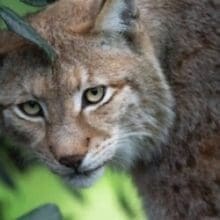The Enigmatic Beauty of Servals: Nature’s Masterpiece
Enigmatic Beauty of Servals
Servals, with their striking appearance and elusive nature, have captivated the hearts of wildlife enthusiasts and researchers alike. These medium-sized wild cats, native to Africa, possess a unique combination of physical attributes and behavioral characteristics that make them truly fascinating creatures. In this article, we will delve into the enigmatic beauty of servals, exploring their physical features, hunting techniques, and conservation status.
The Physical Marvels of Servals
Servals are instantly recognizable due to their distinctive physical features. Their most prominent attribute is their long legs, which are perfectly adapted for their habitat. These legs enable them to navigate through tall grasses with ease, giving them a significant advantage when hunting. Additionally, servals have large ears, which are not only aesthetically pleasing but also serve a practical purpose. These ears are highly sensitive and allow servals to detect the slightest movements of their prey, even in the densest vegetation.
Another remarkable physical feature of servals is their coat. Covered in a pattern of bold spots and stripes, their fur provides excellent camouflage in their natural habitat. This camouflage is crucial for their survival, as it allows them to remain hidden from both predators and prey. The serval’s coat also acts as a thermal regulator, keeping them cool in the scorching African heat.
The Hunting Techniques of Servals
Servals are skilled hunters, employing a variety of techniques to secure their meals. One of their most impressive hunting strategies is their ability to leap high into the air to catch birds in flight. This remarkable feat is made possible by their powerful hind legs, which allow them to jump up to ten feet in the air. Servals also have a unique hunting technique known as “pounce-pounce,” where they use their long legs to pounce on unsuspecting prey from a distance.
Furthermore, servals have an exceptional sense of hearing, which they utilize to locate small mammals, such as rodents, in the grass. Once they have pinpointed the location of their prey, they use their long legs to swiftly pounce and capture it. This combination of agility, speed, and acute hearing makes servals highly efficient hunters.
The Conservation Status of Servals
Despite their remarkable qualities, servals face numerous threats to their survival. Habitat loss due to human activities, such as agriculture and urbanization, is one of the primary challenges they encounter. As their natural habitat diminishes, servals are forced to compete for resources with other predators, leading to increased conflict and a decline in their population.
Another significant threat to servals is poaching. Their beautiful fur is highly sought after in the illegal wildlife trade, leading to a decline in their numbers. Additionally, servals are sometimes killed by farmers who view them as a threat to their livestock.
Efforts are being made to protect and conserve servals. Organizations such as the African Wildlife Foundation and local conservation groups are working to raise awareness about the importance of preserving serval habitats and implementing measures to reduce human-wildlife conflict. These initiatives include the establishment of protected areas and the promotion of sustainable farming practices that minimize the risk to both servals and livestock.
Summary
Enigmatic Beauty of Servals: Servals are truly nature’s masterpiece, with their unique physical features and hunting techniques. Their long legs, large ears, and striking coat make them instantly recognizable and perfectly adapted to their environment. Their hunting techniques, such as leaping into the air and using their acute hearing, showcase their agility and efficiency as predators. However, servals face numerous threats, including habitat loss and poaching. Conservation efforts are crucial to ensure the survival of these enigmatic creatures. By raising awareness and implementing measures to protect their habitats, we can help preserve the beauty and wonder of servals for future generations.
Read More About Servals From Wikipedia




